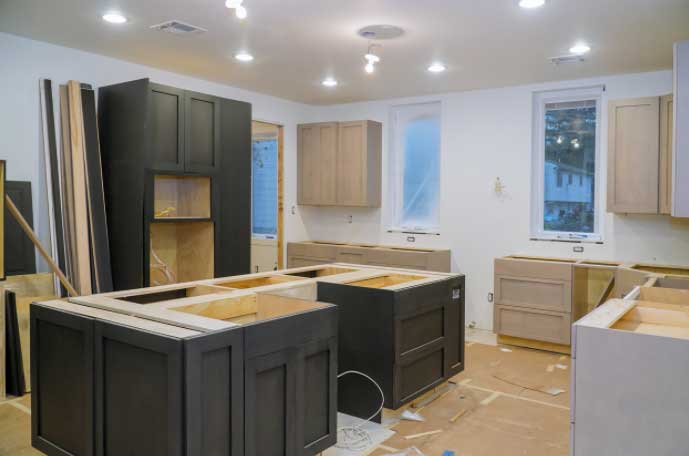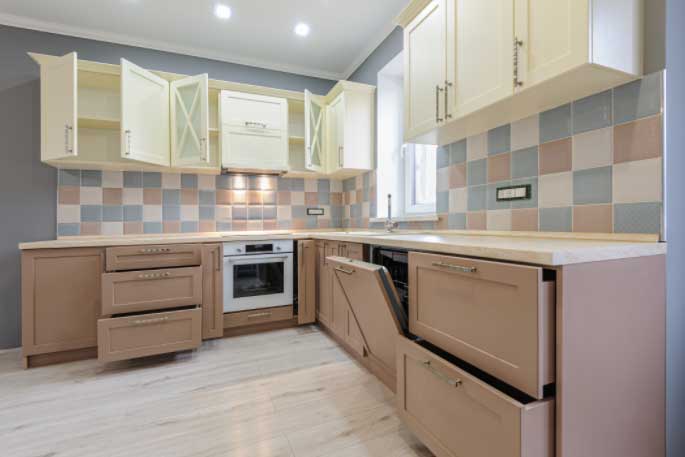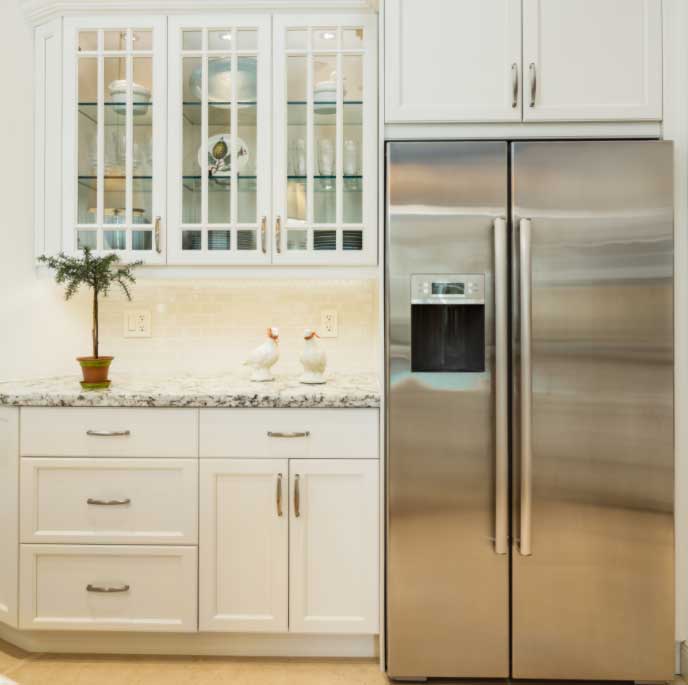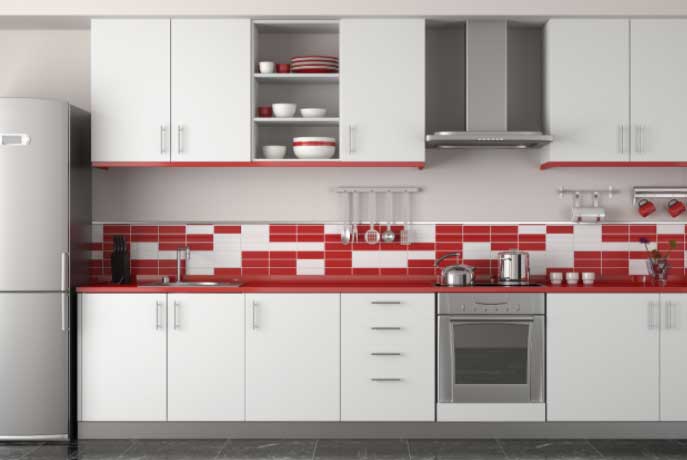Everything You Need to Order New Cabinets
Ordering new cabinets for your kitchen or bathroom is a great way to totally transform the function and look of a space. However, this is often a project that feels out of reach for most homeowners. This is because there are many components that go into updating your kitchen cabinets, which can scare off a lot of homeowners. Depending on the scope of the work, many homeowners are actually better equipped to handle this project than they realize.
For example, one accessible kitchen project is called cabinet refacing. For this project, you won’t have to worry about tearing out old cabinets or hanging new ones. Instead, you will just replace your cabinet doors and drawer fronts. This makes the project much cheaper and easier. You will also likely be refinishing your cabinet boxes to match, so you may have to do some painting as well.
If you have some DIY experience, replacing the cabinet boxes doesn’t require years of carpentry experience. Ready-to-assemble cabinet boxes are pre-cut to your sizes and fit together using dado joints, wood glue, and some tacks. This assembly method makes adding storage solutions to your kitchen or bathroom a lot easier. Check out this customer spotlight where we featured Tom and Linda’s kitchen transformation!
Whether you choose a full gut and remodel or something smaller like a fresh coat of paint, you will do some research to make a solid plan. To help you get started on the right foot, we put together this blog detailing everything you need to order cabinets for your next project.
Cabinet Boxes
Before you can decide between a refacing and remodeling project, you will need to inspect your cabinet boxes. The boxes are the foundation of your kitchen storage and support your work surfaces. Using a flashlight, inspect your cabinet boxes for any damage. Pay close attention to whether or not you see any kinds of water damage.
At this stage, you should also take down some measurements to help you get started. First, you should measure your kitchen, especially if you are planning a larger project. As you take down your measurements, you will also get an idea as to whether your sizes are closer to standards for cabinet height and width or if you will be working with non-standard sizes. Often, older homes can require more unique sizing solutions.
Cabinet Box Types
For those looking to replace their cabinet boxes, it can be helpful to know more about the configuration options available. Many people will replace cabinet boxes with the same type. For example, replacing a base cabinet with doors with a new one. While there is nothing wrong with this, it is not the only option.
Consider this example from Tom and Linda’s project mentioned above. Tom and Linda were prepared to install a new pantry with deep shelves. Sounds great right? However, the deep lower shelves would have been inconvenient and difficult to access. What they did not realize is that they could instead install drawers at the bottom. This way, you can easily pull out the drawer to access the storage. This can be a great benefit for base cabinets that are used for things like pots and pans. Plus, strategically placing drawer bases can also help you save your back from repeatedly crawling into your cabinets while cooking.

Base Cabinets
In their most basic form, our basic, base cabinet boxes feature a solid wood face frame and a plywood carcass. These can be utilized for a wide variety of storage applications from cooking utensils to dry food storage. The basic boxes can also be configured to include shelves.
Additionally, these cabinets can be configured to include between 1 and 4 drawers, corner applications, to hold a small appliance, or to hold your kitchen sink. Choosing a variety of cabinet boxes can help you create unique storage solutions for your space.
One way to get started determining your cabinet box combination is to create a drawing. Since you already have measured your kitchen, you can make a quick diagram of your kitchen layout. Then, create a guide and label each cabinet. Now, fill in what you intend to store in each cabinet in your plan. Hopefully, this will help you identify places where you can improve your layout for your specific needs.
Tall cabinets
Pantries and refrigerator cabinets are a great way to utilize vertical space in your kitchen. This is often space that can go under-utilized, like the space on top of your refrigerator, but is perfect for things like pressure cookers or lightly used, small appliances. With some glass cabinet doors, your cabinets above the refrigerator can be used to display decorative items.
Wall cabinets
Utilizing vertical storage space is vital to creating a functional kitchen or bathroom space. These wall cabinets can be customized to include shelves, which can be great for plates, bowls, or dry food storage. Additionally, wall cabinets can be great candidates for glass cabinet doors. Like refrigerator cabinets, this gives your kitchen storage the added dimension of style. However, be sure to keep your glass-front cabinets clean, as you wouldn’t want to put a mess on display for your guests.
Drawer Fronts

Now that you have your boxes in order, you will need to update the cabinet doors and drawer fronts. These fronts will largely determine the style of your kitchen, so it is important to browse through some available styles before making a selection.
For your drawer fronts, you will likely be selecting them to match your cabinet doors. One way to do this is to select drawer fronts that are made in the same way as your cabinet doors. For solid wood, this typically means choosing 5-piece construction. This means that the drawer fronts, like the cabinet doors, are made from 5 separate pieces.
Alternatively, you may choose solid, or slab-style, drawer fronts. Instead of being a direct match, solid drawer fronts won’t feature a panel or inside edge detail. They will, however, match in material type and outside edge profile. These can be a bit more cost-effective than 5-piece drawer fronts, and they can produce stunning contemporary designs.
Cabinet Doors
If you have been doing some research and planning, you have likely already selected your cabinet door style. Broadly speaking, cabinet doors can be broken down into three categories: raised panel, flat panel, and slab-style. Flat-panel cabinet doors are often used in more contemporary designs, while raised panel doors are typically a bit more traditional. You are likely already familiar with our most popular flat panel door, which is the Shaker cabinet door.

Slab-style style cabinet doors are great for more modern applications, particularly when installed with a full overlay. The overlay is the distance that the cabinet doors and drawer fronts go past the cabinet box opening. In other words, it is a measurement of how much of the face frame will be covered. With a full overlay, slab-style cabinets create stunning walls of seamless cabinetry that really pop when finished in trendy colors.
Other Parts Needed to Build Your Cabinets
Shelves are something you don’t want to forget. Just be sure to measure the depth of your internal cabinet opening to get a good fit with very little play. Wood can expand and contract, so you need to make sure there is enough space for this to happen without destabilizing the shelf. Additionally, be sure to check if the shelf pins will be included, and if not, you should find out their size to get them from a local hardware store.
Hinges and drawer pulls are other important components that if forgotten can hold up your project. In addition, drawer slides are essential if you want to have a fully-functional drawer system. Most of your hardware needs will be based on your cabinet configurations and sizes. Be sure to double-check all sizes used to determine the exact hinges and drawer slides you need for your project.
Wrapping Up Your Cabinets

It is important to start any renovation or remodel project by making a plan. In addition to things like scheduling and labor, the plan should also have a detailed list of required materials. This list will no doubt change as you progress through your project, so be sure to keep it handy and accurate. If you are struggling with starting, or you have a list and are ready to talk style and material, feel free to give us a call at 1-855-669-5222 or an email at info@cabinetnow.com. Our well-trained sales staff can help you with everything from measuring to checking out.
 made in the USA
made in the USA



